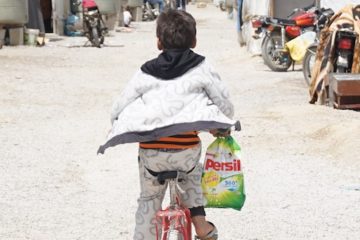June 20, 2014
The impact on healthcare is even worse. The Geneva Convention prohibits fighting parties from attacking doctors, ambulances, hospitals, or field hospitals (FHs) displaying a Red Cross or Red Crescent emblem; such targeting is considered a war crime. In Syria, no such norms or conventions are respected. There has been a systematic targeting of healthcare professionals, hospitals, and ambulances from the beginning of the crisis, which has led to the destruction of the healthcare infrastructure and has forced thousands of physicians to flee.
According to the World Health Organization (WHO), only 50% of hospitals appear to be fully functioning, due to destruction of buildings, and lack of staff, equipment, and medicine. More than 460 healthcare workers have been killed. More than 50% of all physicians have been forced to leave to other countries. In Aleppo, a city of more than 3 million people, only 300 physicians have remained, including only 16 surgeons and 3 orthopedic surgeons. Aid workers have also been targeted. The Syrian Red Crescent has lost at least 33 volunteers, killed on duty, while transporting patients, or delivering food parcels or medications.
The healthcare system in Syria has been decimated by the targeting of healthcare personnel, and the destruction of healthcare facilities, pharmaceutical factories,, and the public health infrastructure. In addition, large-scale displacement of the population and contamination of water resources have further compromised healthcare. Benchmarks for access to safe and affordable healthcare, vaccination rates, neonatal care, maternal health, and women’s healthcare have all plummeted. The World Health Organization (WHO) has confirmed the resurgence of once-extinct infectious diseases like polio and leishmaniasis, as well as the emergence of measles, typhoid, hepatitis, H1N1, and tuberculosis epidemics. SAMS has estimated that AT LEAST 200,000 citizens have died due to non-communicable chronic diseases (NCD). Many more have died due to untreated cancer, poor access to treatment, and renal failure due to non-existent access to dialysis centers. At least 600,000 Syrians have sustained lifelong disabilities, including amputation, spinal cord paralysis, burns, brain damage, and loss of eyesight. Many injuries have been caused by shrapnel, sniper bullets, and indiscriminate bombing with a variety of prohibited weapons. Millions of people, especially children, have sustained deep psychological scarring and post-traumatic stress disorder (PTSD).
Syrian diaspora non-government organizations (NGOs) and other INGOs are struggling to provide lifesaving medical and humanitarian relief based on needs assessment. They have been targeting populations that are inaccessible to UN agencies and other official means of aid.




